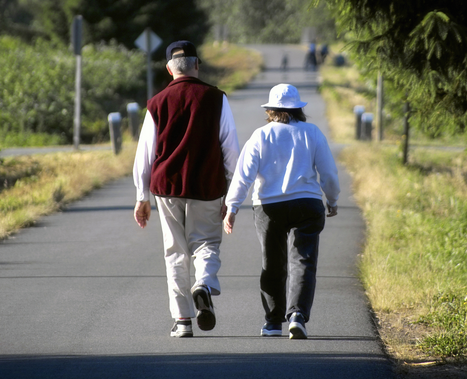Cuenca is the ‘walkingest’ city in Ecuador, the national census bureau reports
According to Ecuador’s census bureau, Cuencanos walk more than residents of any other of Ecuador’s five largest cities.

An expat couple takes a walk in a Cuenca park.
The National Institute of Statistics and Census (INEC) says that 7.7% of Cuenca’s population walks as a primary means of transportation. This contrasts with 3% pedestrianism for Quito and Guayaquil, and 5% for Machala and Santo Domingo.
Census statistics also show that 55% of Cuencanos use buses as the main means transportation while 11% report the tram as their primary transport. A little more than 5% use bicycles and the balance use private vehicles, including motorcycles. According to the census bureau, Cuenca has the highest per capita rate of car ownership of any city in Ecuador.
Sebastian Izquierdo, director of Cuenca’s Environmental Management Commission, says most of the city’s walking is in the historic district. “One of the reasons people choose to walk in El Centro is that vehicular traffic is so heavy that it’s usually quicker to get to a destination on foot,” he says. “Another is that it is simply and pleasant area for walking.”
Cuenca expat and travel writer Stan Romo says there’s another why Cuencanos like to hoof it. “This is a relatively compact city and it’s easy to get to the places you need to go on foot. This is especially true for expats and is one of the reasons most of us don’t have cars.”
Romo adds: “You a hear a lot about the 15-minute city these days, meaning you can meet most of your necessities with a short walk or public transport ride. Well, for many of us, Cuenca sets the example of the 15-minute city.”
Izquierdo says he expects even more pedestrians on the streets of the historic district in the coming years. The city’s master transportation plan includes the conversion of several streets to pedestrian malls with possible restrictions private vehicles. “Since 2013, we’ve designated several streets as pedestrian only and more are in the works.”
As spokesman for the public works office says the city plans to add or rebuild 122 kilometers of sidewalks by 2026. “Despite improvements over the last 10 years or so, we have many sidewalks in need of repairs and reconstruction,” says Ronny Ortiz. “We understand this poses problems for elderly and disabled residents and acknowledge that we have much work ahead of us.”
Ortiz adds that Cuenca’s parks, many of them added since 2012, offer excellent, traffic-free walking tracks. “Those who are interested in a peaceful walk in a natural setting, the city’s expanded linear parks on the rivers and newer parks, such as Ictocruz and the botanical gardens, provide many kilometers of safe walkways.”





















